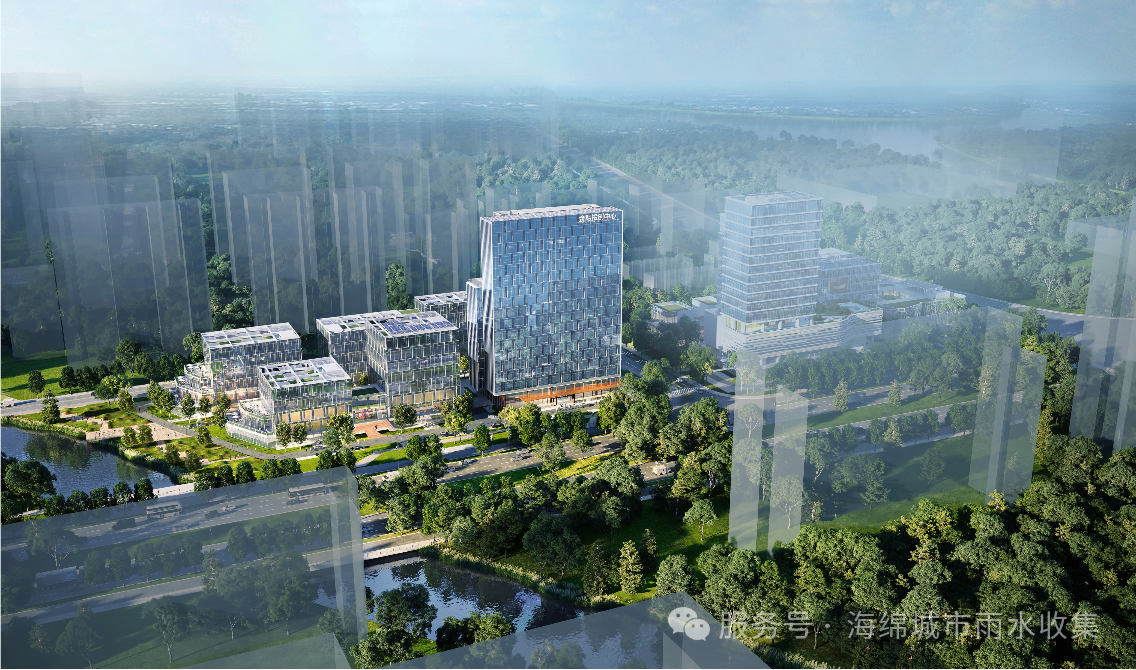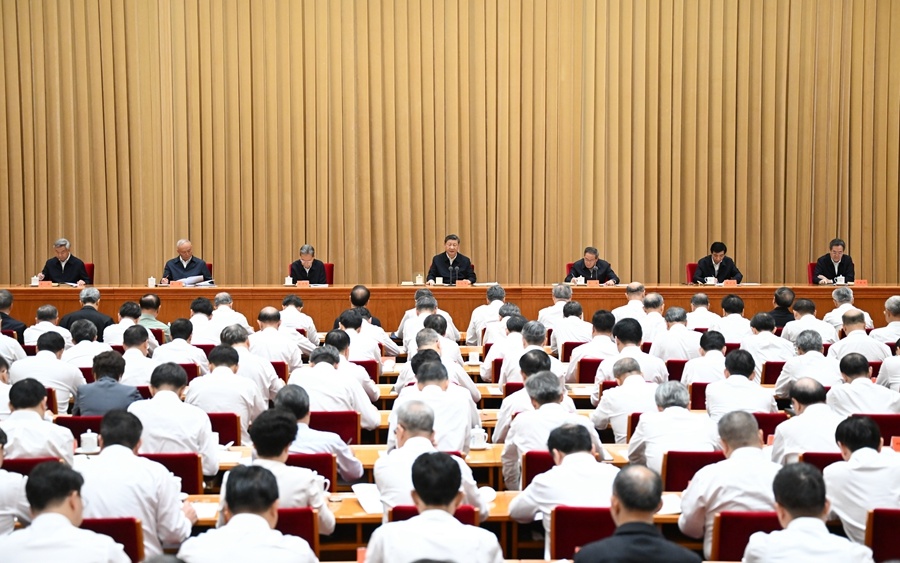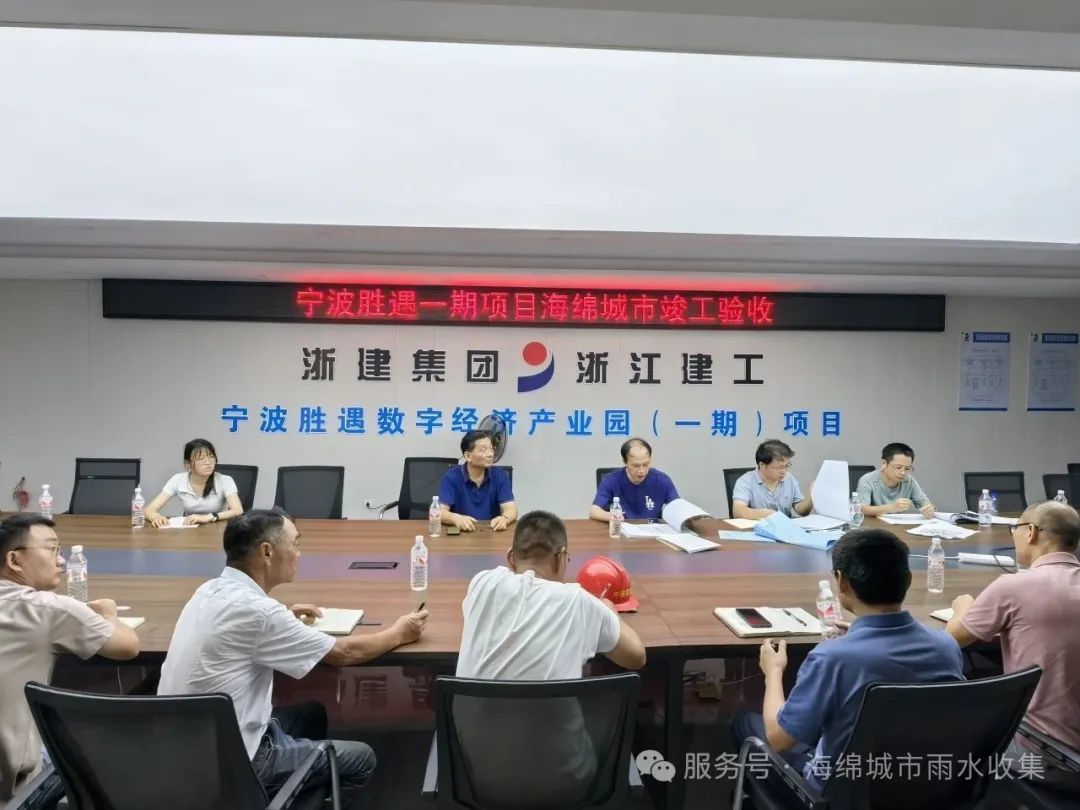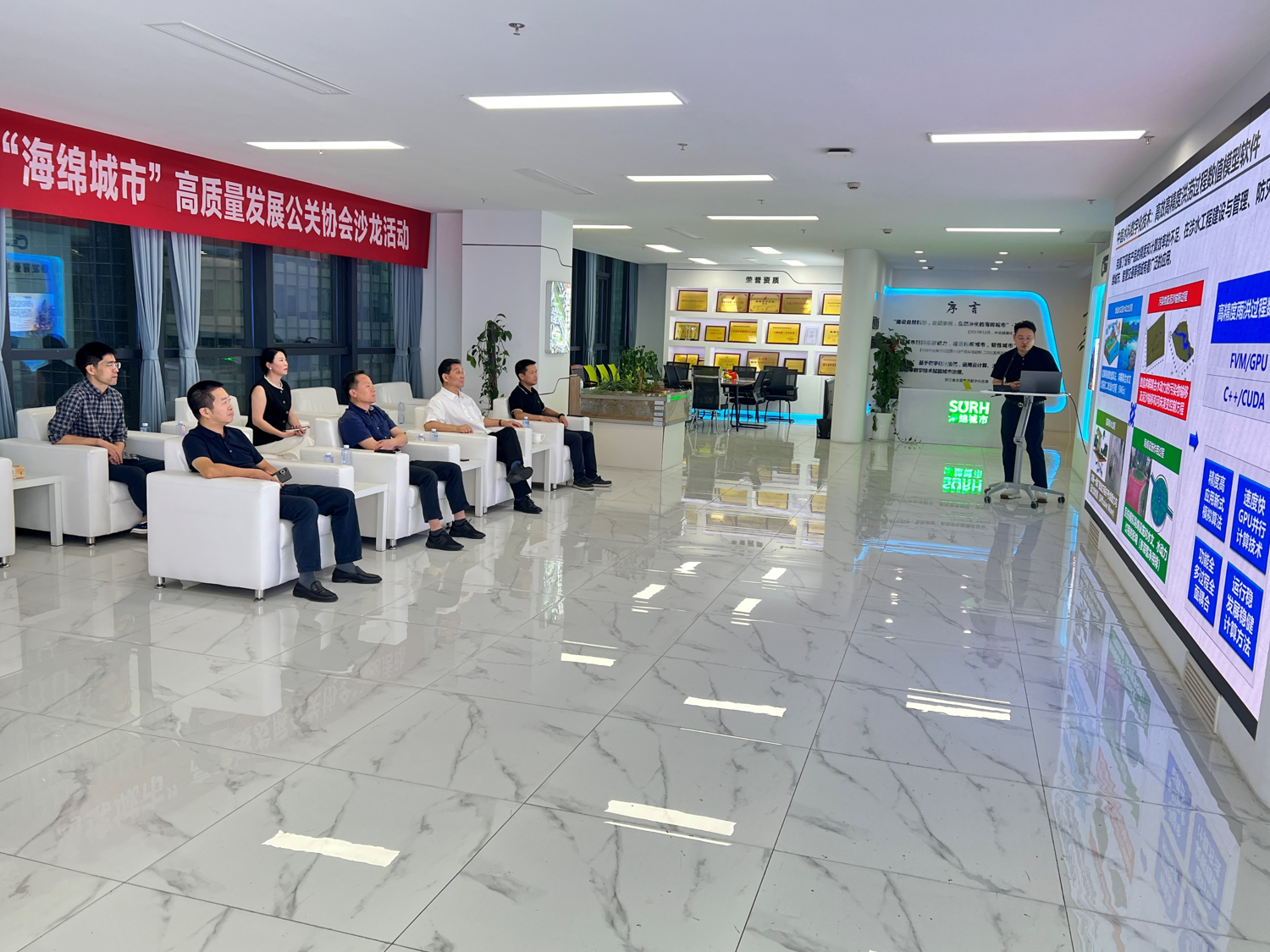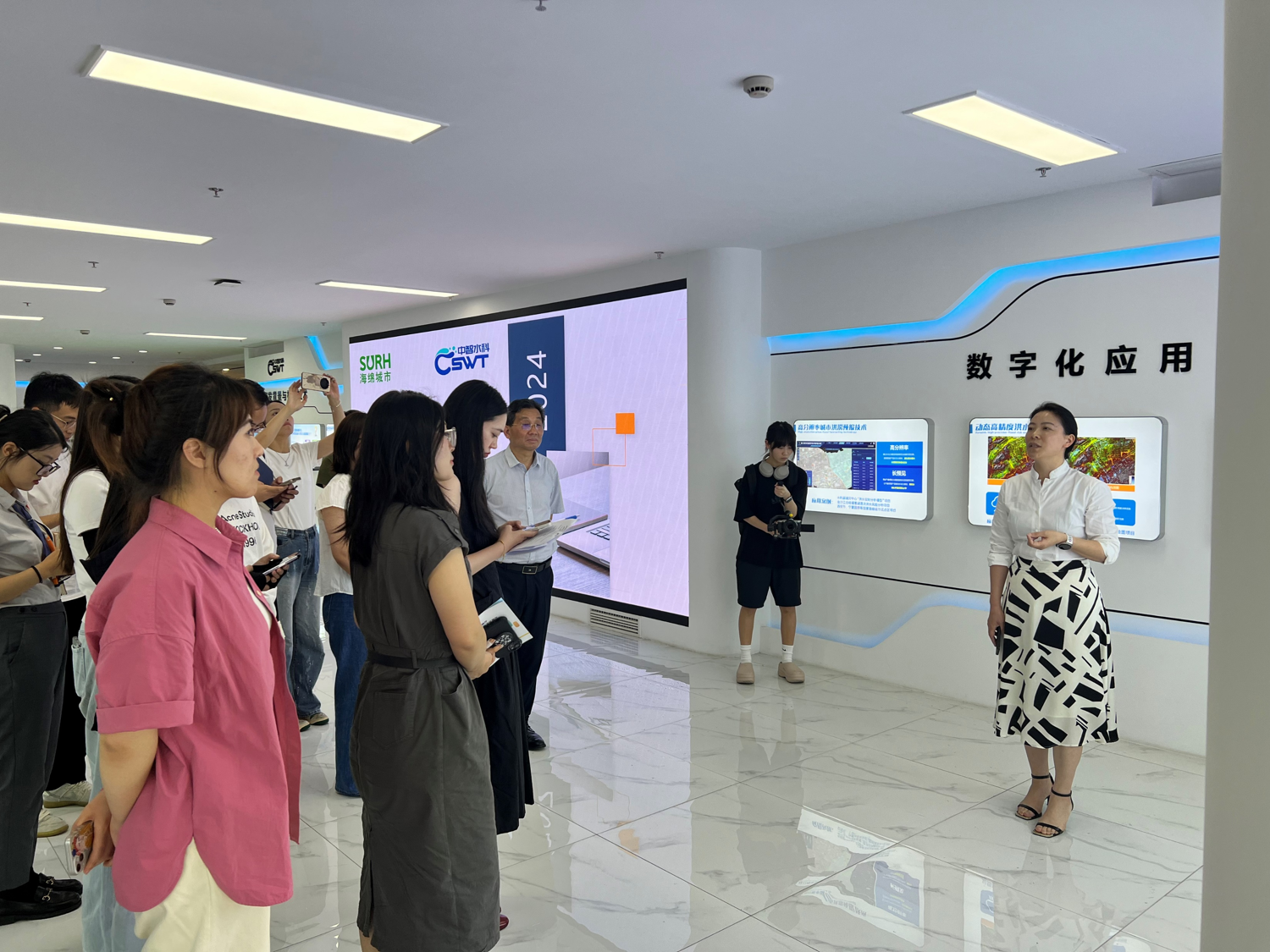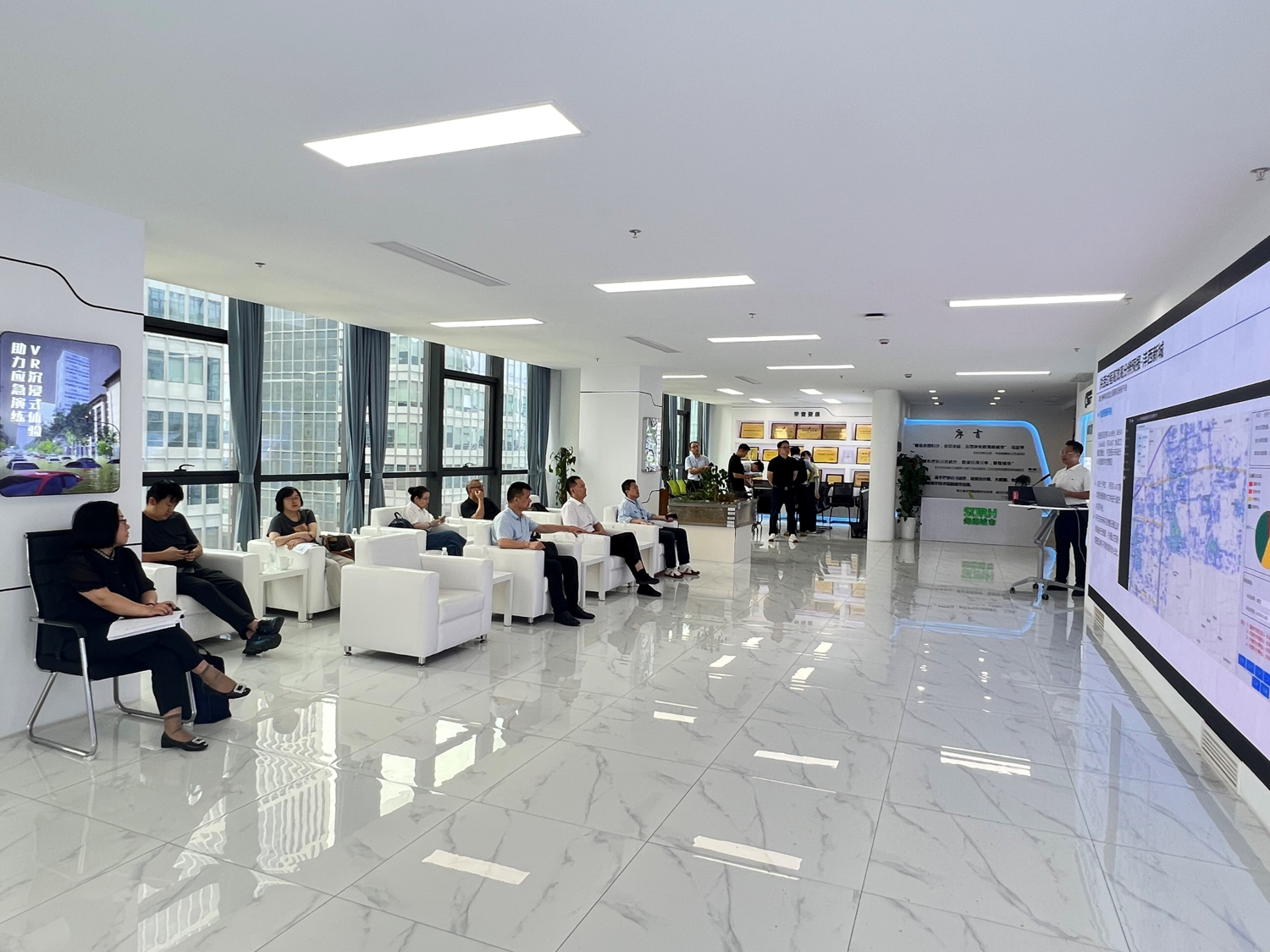14
25-07
Forging a Path of Urban Development with Chinese Characteristics: A Chronicle of the Party Central Committee with Comrade Xi Jinping at its Core Leading Urban Work
Paving a Path of Urban Development with Chinese Characteristics: A Chronicle of the Party Central Committee with Comrade Xi Jinping at Its Core Leading Urban Work
Across China, over 690 cities are scattered like stars, with 940 million people living in urban areas.
Bearing the people's aspirations for a better life and having experienced the world's largest and fastest urbanization process, China's urban development has been magnificent and remarkably successful.
Since the 18th National Congress of the Communist Party of China, the Party Central Committee with Comrade Xi Jinping at its core has always placed urban work in an important position in governing the country. General Secretary Xi Jinping has made a series of important expositions on urban work, profoundly answering the fundamental question of who to rely on and who to work for in urban construction and development, focusing on solving the major proposition of what kind of city to build and how to build it, setting the direction for urban development and construction in the new era, and paving a path of urban development with Chinese characteristics.
"Understand, respect, and comply with the laws of urban development, and correct the guiding ideology of urban development."
The Xiongan New Area in midsummer is full of vitality—
The starting area is full of greenery, with buildings rising from the ground; the Rongdong area is bustling with activity, and key facilities are accelerating construction; the high-tech zone has a dense road network, and the integration of station city, industry city, and green city is beginning to show; the Baiyangdian lotus blossoms are blooming, and the Millennium Forest is full of green...
This high-level modern city, personally decided, deployed, and promoted by General Secretary Xi Jinping, is growing rapidly and changing with each passing day.
Plan for the millennium and create a benchmark for the era.
In April 2017, the important news that the CPC Central Committee and the State Council decided to establish the Hebei Xiongan New Area spread all over the country.
"Efforts should be made to build a future city without 'urban diseases' and truly turn the high-standard urban planning blueprint into a high-quality urban development reality." Planning and constructing the Xiongan New Area is a pioneering undertaking by General Secretary Xi Jinping to vigorously promote urban work in the new era.
Cities are the centers of China's economic, political, cultural, and social activities, and play a pivotal role in the overall work of the Party and the country.
"To do a good job in urban work, we must first understand, respect, and comply with the laws of urban development, and correct the guiding ideology of urban development." Since the 18th National Congress of the Communist Party of China, the Party Central Committee with Comrade Xi Jinping at its core has profoundly grasped the laws of urban development and made systematic plans and deployments for urban work from an overall and strategic perspective, and put forward a series of new ideas, new viewpoints, and new judgments.
Grasping the direction of urban development—
Entering a new era, China's urban population has exceeded the rural population, urbanization has been rapidly advancing, and urban development has made remarkable achievements, but it also faces many problems.
From "large-scale demolition and construction constantly" to "urban planning hanging on the wall"; from "urban diseases" such as air pollution, traffic congestion, and garbage siege to urban architectural phenomena such as greed for big and foreign...
General Secretary Xi Jinping pointed out: "If the problems existing in China's urban development are not solved for a long time, they may evolve into social contradictions and problems. We must attach great importance to, actively explore, and seize the time to solve the existing problems."
Starting from the strategic overall situation, the Party Central Committee with Comrade Xi Jinping at its core firmly grasps the fundamental attributes and value pursuit of people's cities, and makes top-level design and overall planning for China's urban development.
On December 20, 2015, the Central Urban Work Conference was held in Beijing. This was the highest-level urban work conference convened by the Party Central Committee again after 37 years.
In terms of development structure, it emphasizes the overall planning of space, scale, and industrial structure to improve the globality of urban work; in terms of development links, it emphasizes the overall planning of planning, construction, and management to improve the systematicness of urban work; in terms of development power, it emphasizes the overall planning of reform, science and technology, and culture to improve the sustainability of urban development; in terms of development layout, it emphasizes the overall planning of production, life, and ecology to improve the livability of urban development; in terms of development subjects, it emphasizes the overall planning of the government, society, and citizens to improve the enthusiasm of all parties to promote urban development.
At this meeting, General Secretary Xi Jinping clearly put forward the basic idea of "five overall plans" for urban work, clarified the principles and positions on a series of fundamental issues, corrected the work orientation, and provided fundamental guidelines for doing a good job in urban work in the new era.
Strengthening the leading role of urban planning—
In February 2014, when inspecting Beijing, General Secretary Xi Jinping came to the Beijing Planning Exhibition Hall to learn in detail about Beijing's geographical environment, planning layout, functional positioning, and development changes.
General Secretary Xi Jinping emphasized: "Urban planning plays an important leading role in urban development. To inspect a city, first look at the planning. Scientific planning is the greatest benefit, planning errors are the greatest waste, and planning setbacks are the greatest taboo."
Regarding the planning and construction of Xiongan New Area, General Secretary Xi Jinping repeatedly emphasized "planning every inch of land clearly before starting construction" and "adhering to the use of the most advanced concepts and international first-class standards for planning, design, and construction, which can stand the test of history."
For densely populated areas such as the eastern region, General Secretary Xi Jinping emphasized the need to optimize the internal spatial structure of urban agglomerations, rationally control the size of large cities, and not blindly "spread the pie."
In Nyingchi, Tibet, on the snowy plateau, General Secretary Xi Jinping requested the scientific demarcation of urban development boundaries and ecological protection red lines, the scientific planning and construction of supporting infrastructure, and the improvement of the city's modernization level.
In February 2016, the CPC Central Committee and the State Council issued the "Several Opinions on Further Strengthening Urban Planning, Construction and Management," which emphasized the need to formulate urban plans in accordance with the law and achieve a blueprint to the end, in response to problems such as various urban plans "fighting" and urban plans not being implemented effectively.
Beijing took the lead in establishing the "three red lines" – a total population ceiling, an ecological control line, and an urban development boundary. By optimizing functions, the population has been rationally疏解 (redistributed/diverted), resulting in a 15% decrease in the permanent population of the six urban districts compared to 2014.
Chengdu, a mega-city in the west, has realized a multi-center, group-style layout, and established an industrial ecosystem with 66 industrial parks as the core, no longer competing homogeneously, but developing in an integrated manner;
Shanghai is maneuvering in a compact space, striving to give people more public areas, and parks are accelerating "growth"...
All localities take urban planning as the lead and actively explore development strategies that conform to their own characteristics.
Promoting urban governance innovation—
On September 28, 2018, General Secretary Xi Jinping, who was inspecting Liaoning, came to the Donghuayuan Community in Fushun City to learn about the resettlement of people relocated from the local coal mining subsidence area.
Facing the residents who were surrounding him, the General Secretary said with deep affection: "I have always been concerned about resource-exhausted cities, and I have been thinking about how the economy of these cities is doing and how the people's lives are going. I am here to see it this time. In the process of transformation and development of resource-exhausted cities, we must first ensure people's livelihood and the lives of people in need, so that people's lives will get better and better."
Urban governance is an important part of promoting the modernization of the national governance system and capacity. From food, clothing, housing, transportation, education, employment, medical care, and elderly care to culture, sports, living environment, and social order, all aspects reflect the level of urban management and service quality.
For megacities, the requirement is to "find a new path for the management of megacities with Chinese characteristics and continuously improve the level of urban management"; for large cities, it is pointed out that "we must take the road of connotative development" and "delineate permanent development boundaries"; for large cities, it is clear that "we must strengthen the radiation and driving role of large cities on small and medium-sized cities and weaken the siphon squeeze effect"; for small towns, it is emphasized that "small towns should be developed in accordance with local conditions and promote the standardized and healthy development of characteristic towns"...
Since the 18th National Congress of the Communist Party of China, General Secretary Xi Jinping has visited cities across the country to examine the current situation of urban development, reveal the laws of urban development, clarify the strategic positioning of cities, and point out the path of urban governance.
The Third Plenary Session of the 18th CPC Central Committee made it clear that "promoting innovation in urban construction and management", and the Third Plenary Session of the 20th CPC Central Committee proposed "deepening the reform of the urban construction, operation, and governance system and accelerating the transformation of urban development methods", and in-depth urban governance changes are continuing to advance.
By rationally controlling the size of cities, optimizing the spatial structure of cities, and improving the level of digital governance, the attractiveness of urban elements and the comprehensive competitiveness of our country have been continuously improved, providing strong support and a powerful engine for the construction of a modern and powerful country.
Entering the new era, China's urbanization rate of permanent residents has increased from 53.1% in 2012 to 67% in 2024; from 2013 to 2024, China has cumulatively achieved more than 150 million new urban jobs; in 2024, the GDP of 27 cities exceeded 1 trillion yuan... Cities of innovation, cities of openness, cities of revitalization, smart cities, park cities, resilient cities, a picture of harmonious and livable, vibrant, and distinctive Chinese cities is unfolding.
"Cities are important carriers of modernization"
The report to the 20th National Congress of the Communist Party of China proposed that, from now on, the central task of the Communist Party of China is to unite and lead the people of all ethnic groups across the country to comprehensively build a strong socialist modern country and achieve the second centenary goal, and to comprehensively promote the great rejuvenation of the Chinese nation with Chinese-style modernization.
"Cities are important carriers of modernization." General Secretary Xi Jinping profoundly expounded the important significance of cities in comprehensively promoting the construction of a strong country and the great rejuvenation of the Chinese nation with Chinese-style modernization.
Chinese-style modernization is the modernization of a huge population. More than 1.4 billion people in our country have entered a modern society as a whole. The scale exceeds the total population of existing developed countries. The arduousness and complexity are unprecedented, and the development path and promotion methods must also have their own characteristics.
In December 2013, General Secretary Xi Jinping pointed out at the Central Urbanization Work Conference that promoting urbanization is an important way to solve the problems of agriculture, rural areas, and farmers, a strong support for promoting coordinated regional development, and an important starting point for expanding domestic demand and promoting industrial upgrading, which is of great practical significance and far-reaching historical significance for building a moderately prosperous society in all respects and accelerating socialist modernization.
On November 29, 2023, during his inspection in Shanghai, General Secretary Xi Jinping made a special trip to Minhang District, where the proportion of the migrant population is relatively high, and visited the New Era Urban Builders and Managers Home for research.
"Is the rent expensive?" "Not expensive, I live very comfortably. Thank the Party and the government for giving me a home in Shanghai." The General Secretary exchanged views with Zheng Lanyu, a new Shanghainese who rented here.
General Secretary Xi Jinping then visited two dormitory-style rental houses in succession, listening to the stories of nurses, security guards, and other front-line workers at the grassroots level in pursuit of a better life.
"A city should not only have height, but also warmth." General Secretary Xi Jinping said affectionately that it is necessary to practice the concept of a people's city, continuously meet the diversified and diversified needs of the people for housing, and ensure that the migrant population can come in, stay, live in peace, and be able to succeed in their careers.
On the road of Chinese-style modernization, no one can be left behind.
Combining the experience of urbanization practice and exploration in our country since the reform and opening up, and based on the "contradiction between the people's growing needs for a better life and unbalanced and insufficient development", General Secretary Xi Jinping clearly proposed "taking a path of urban development with Chinese characteristics".
Since the 18th National Congress of the Communist Party of China, our country has been continuously improving the system and mechanism for promoting new urbanization:
Deepen the reform of the household registration system, relax and relax the restrictions on settling down except for individual megacities, and more than 150 million agricultural transfer populations have settled in cities in a stable and orderly manner since 2014;
The system for the citizenization of the agricultural transfer population has been basically established, the coverage of basic urban public services has been expanded, the proportion of migrant workers participating in basic urban employee medical and pension insurance has increased, and more than 90% of children of compulsory education age who move with their parents attend public schools in the inflow area or enjoy government-purchased degree services;
Accelerate the process of urban-rural integration, establish 11 national urban-rural integrated development pilot zones, gradually establish a basic public service provision mechanism for urban and rural areas, continuously narrow the income gap between urban and rural residents, better play the role of county towns in connecting cities and driving rural areas, and carry out demonstration of strengthening weaknesses and strengthening weaknesses in 120 county towns.
Coordinated regional development is an important support for Chinese-style modernization.
On October 16, 2020, General Secretary Xi Jinping chaired a meeting of the Political Bureau of the CPC Central Committee to review the Outline of the Construction Plan for the Chengdu-Chongqing Twin-City Economic Circle. To sing the "Twin-City Story" well, the meeting required that the Chengdu-Chongqing region firmly establish the idea of a single game of chess and the concept of integrated development, improve the cooperation mechanism, and create a high-level model of regional collaboration.
"'Twin-City Story' I am referring to two groups of places, the Beijing-Tianjin Twin Cities and the Chengdu-Chongqing Twin Cities." In February 2024, General Secretary Xi Jinping pointed out during his inspection in Tianjin that "we must focus on promoting the in-depth and solid development of the coordinated development of Beijing, Tianjin, and Hebei, deeply promote the institutional mechanism innovation of regional integration and the integration of Beijing and Tianjin, sing the 'Twin-City Story' of Beijing and Tianjin well, and effectively connect the regional innovation chain, industrial chain, supply chain, capital chain, and talent chain."
Common prosperity for all the people is an essential feature of Chinese-style modernization, and coordinated regional development is an inevitable requirement for achieving common prosperity.
"Generally speaking, the spatial structure of China's economic development is undergoing profound changes, and central cities and urban agglomerations are becoming the main spatial forms for carrying development factors. We must adapt to the new situation and plan new ideas for coordinated regional development." General Secretary Xi Jinping has profound foresight and diagnosis for urban work.
When inspecting local areas, General Secretary Xi Jinping often puts a map on hand and urges all localities to "consciously break the mindset of their own 'one-acre three-point land' and work together towards the goals of top-level design."
"Building a coordinated development pattern of large, medium, and small cities based on urban agglomerations and metropolitan areas" "Guiding the coordinated development of large, medium, and small cities and small towns" "Strengthening the coordinated linkage between metropolitan areas"... General Secretary Xi Jinping has repeatedly emphasized the key word "coordination".
Macau, with an area of only more than 20 square kilometers at the beginning of its return, has long had an economic structure with "one industry dominating".
"Actively participate in the construction of the Guangdong-Hong Kong-Macao Greater Bay Area, integrate high-quality resources, and deepen coordinated development." In December 2024, General Secretary Xi Jinping pointed out the direction during his inspection of Macao.
Finding the strategic positioning in the overall national situation and thinking about the development path beyond the gains and losses of "one city, one place" is an important method of urban work in the new era.
In Beijing, it is clear to build a political center, a cultural center, an international exchange center, and a scientific and technological innovation center; in Shanghai, it is emphasized to accelerate the construction of a scientific and technological innovation highland with global influence; in Shenzhen, it is required to build a pilot demonstration zone of socialism with Chinese characteristics... General Secretary Xi Jinping clarified the development orientation for megacities.
Create three high-quality development "power sources" in the Beijing-Tianjin-Hebei region, the Yangtze River Delta, and the Guangdong-Hong Kong-Macao Greater Bay Area, implement the "River Strategy" for the development of the Yangtze River Economic Belt, ecological protection and high-quality development of the Yellow River Basin, and further promote the large-scale development of the western region, the comprehensive revitalization of the Northeast, the rise of the central region, and the first development of the eastern region...
Cities are integrated into regional coordinated development strategies, building up growth poles, complementing each other's advantages, and gathering into a powerful force for Chinese-style modernization.
"Urban management should be as meticulous as embroidery"
Great events in the world must be done in detail.
In March 2017, General Secretary Xi Jinping pointed out when participating in the deliberation of the Shanghai delegation to the National People's Congress: "Urban management should be as meticulous as embroidery."
Using "embroidery" as a metaphor reflects the requirement for precision in urban management.
General Secretary Xi Jinping once pointed out clearly: "When I went to some big cities to investigate, the outstanding problem reflected by everyone was that the scale of the city continued to expand, but there were many hidden dangers in municipal infrastructure, the aging phenomenon was serious, and the above-ground and underground construction was out of balance. It is necessary to strengthen urban planning and overall coordination, eliminate various risks and hidden dangers, and improve the level of refined management of large cities."
Urban management involves facility operation, traffic order, environmental protection and other aspects. Without refined management, it is difficult to give play to the city's due functions, and it is even more difficult to achieve high-quality development.
Promoting high-quality urban development, solving problems is the direction of effort.
The capital Beijing was once plagued by "big city diseases" due to dense population, traffic congestion, and air pollution.
In February 2014, General Secretary Xi Jinping emphasized during his inspection in Beijing that it is necessary to improve the urban management system, improve the level of urban management, especially to strengthen the operation management of municipal facilities, traffic management, environmental management, and emergency management, and promote the modernization of urban management goals, methods, and models.
To solve the problem of congestion, build a comprehensive transportation system with rail transit as the backbone, ground public transportation as the support, and a variety of travel modes as a supplement; "fine embroidery" of urban space, the relocation of key cultural relics such as Shejitan, Taimiao, and Huangshichen, and the reappearance of the style of "Left Ancestral Temple and Right Altar of Land and Grain"; "interspersed with green", "grabbing" green space to create forests in the center of the city where land is at a premium... Over the past 10 years, Beijing has explored effective basic paths and effective methods to solve the "big city disease".
Focusing on solving "urban diseases" and solving the urgent difficulties and expectations of the people, General Secretary Xi Jinping accurately pointed out the direction of efforts——
To improve the safety life of buildings, it is required to improve the management system and mechanism of the construction market and increase the punishment for illegal acts;
Strengthen infrastructure construction, propose to carry out pilot projects for the construction of urban underground comprehensive pipe corridors, and accelerate the construction of sponge cities;
Improve the life channel system, deploy to strengthen the construction of urban disaster prevention and refuge places, and enhance the ability to resist natural disasters, deal with emergencies and crisis management...
Adhering to the problem-oriented approach, implementing the main responsibility of urban management, reforming the urban management system, and changing extensive management to refined management, the city is making people's lives more convenient, more comfortable, and better.
Promoting high-quality urban development, digital and intelligent management is a strong support.
At the end of March 2020, General Secretary Xi Jinping came to the Hangzhou Urban Brain Operation and Command Center during his inspection in Zhejiang, and affirmed Hangzhou's innovative achievements in using the urban brain to improve the governance capabilities of transportation, cultural tourism, and health systems. He hoped that Hangzhou would continue to explore and innovate in building the urban brain, further tap the potential of urban development, accelerate the construction of smart cities, and create more experiences that can be promoted nationwide.
General Secretary Xi Jinping pointed out that the use of cutting-edge technologies such as big data, cloud computing, blockchain, and artificial intelligence to promote the innovation of urban management methods, management models, and management concepts, from digitization to intelligence to wisdom, to make cities smarter and wiser, is the only way to promote the modernization of the urban governance system and governance capabilities, and the prospects are broad.
With the rapid development of digital intelligence, are cities smarter and more intelligent in operation?
In April 2024, General Secretary Xi Jinping came to Chongqing's Digital Urban Operation and Governance Center. This "urban brain" in Chongqing, the data that was scattered in the past, aggregated and empowered, the urban physical indicators such as water, electricity, gas, communication, bridges, tunnels, rails, and pipe networks are clear at a glance, and the city's operating status is comprehensively monitored and analyzed to achieve precise control in multiple fields.
General Secretary Xi Jinping emphasized: "To strengthen digital empowerment and promote the modernization of urban governance, it is necessary to scientifically plan and build big data platforms and network systems, strengthen joint command and coordination among all parties, and effectively improve execution."
Qingdao, Shandong, relies on the urban operation management service platform to incorporate more than 50 municipal departments and more than 600 operating units into the intelligent command and dispatch system; Dengfeng, Henan, "grid governance + digital empowerment" opens up new space for improving the refined and precise service level of cultural tourism... In recent years, digitization and intelligence have empowered refined and intelligent management in various places, bringing convenience to urban governance and people's lives.
Promoting high-quality urban development, community-level governance is an effective guarantee.
In November 2014, when General Secretary Xi Jinping inspected Junmen Community in Fuzhou, Fujian, he raised the three governance questions of "how to make it more convenient for the masses to live and work, how to make the channels for the masses to express their demands smoother, and how to make the masses feel more safe and happier."
The community is the basic unit of the urban governance system, one end is connected to the warmth and coldness of people's lives, and the other end is connected to the long-term peace and stability of the country. To do a good job in community work, thousands of community workers are busy, and Li Xiaona, who was born in the 1990s, is one of them.
In the 12 years of community work, Hailian Community in Lianyungang City, Jiangsu Province, where she is located, has changed from an old community with poor hardware and old facilities to a well-known "National Demonstration Community for Democratic Rule of Law".
During the National People's Congress this year, General Secretary Xi Jinping came to the Jiangsu delegation to participate in the deliberation. The scene of the interaction between the General Secretary and Li Xiaona left a deep impression on everyone——
"How many people are there in your community?" the General Secretary asked with concern.
"7,266 people, composed of 5 residential districts. When I first came, there were only more than 3,000 people, and now it has doubled," Li Xiaona blurted out.
After hearing these figures, the General Secretary was deeply moved: "The community secretary is the 'premier of the alley', who manages a lot of things and is not easy to do."
The affairs of thousands of households in the country are, in the final analysis, the affairs of thousands of households. If the community party organization is well built and strengthened, the community work will have a backbone.
During inspections in cities, General Secretary Xi Jinping often visits communities to understand the situation of grassroots governance, and asks whether the lives of the people are convenient, whether they are satisfied, and what needs they have.
In the Changcheng Garden Community of Jinfeng District, Yinchuan, Ningxia, General Secretary Xi Jinping pointed out that it is necessary to adhere to the leadership of Party building, closely focus on solving the urgent and difficult problems of residents, and deepen, refine, and implement all tasks of serving the people.
During his inspection of the Zhiyuan Community in Wuhan, Hubei, General Secretary Xi Jinping emphasized that more resources should be devolved to the community to enrich the workforce, strengthen information technology construction, improve emergency response capabilities and management service levels, and consolidate the foundation for urban governance.
Walking into the Zaolin West Community in Lanzhou, Gansu, General Secretary Xi Jinping urged that doing useful things well and doing less useless work requires the joint efforts of all parties from top to bottom.
More considerate service projects, better service results, clearer governance ideas, more precise governance systems, more professional governance teams, and smarter governance methods, urban communities vividly explain the true meaning of "cities make life better".
"The city is the city of the people, and the people's city is for the people."
General Secretary Xi Jinping emphasized: "The core of the city is people."
Yangpu is the largest and most populous central urban area in Shanghai. The surging Huangpu River draws a 15.5-kilometer-long waterfront line here. This former "industrial rust belt" is now covered with grass and trees, and residents live comfortably and conveniently, transforming into a "living show belt".
In November 2019, General Secretary Xi Jinping inspected Shanghai and walked along the riverside trestle to view the scenery on both sides of the Huangpu River. During the visit, he met many citizens who were relaxing and exercising. General Secretary Xi Jinping had cordial conversations with them, pointing out that "the city is the city of the people, and the people's city is for the people. Whether it is urban planning or urban construction, whether it is the construction of new urban areas or the renovation of old urban areas, we must adhere to the people-centered approach and focus on the needs of the people."
The people's city is for the people, and we must create a good living environment.
Cities are the most densely populated and socio-economically active areas in China, and also the areas with the most concentrated pollution emissions and ecological environment problems.
As early as the early 1990s, when Comrade Xi Jinping worked in Fuzhou, he vigorously promoted the "Greening Fuzhou" work, took the lead in planting trees, and advocated the combination of "planting greenery wherever there is space" and "planting trees in patches" to make "Rongcheng" more green.
In December 2013, General Secretary Xi Jinping proposed at the Central Urbanization Work Conference, "We must let the city integrate into nature" and "Let residents see the mountains, see the water, and remember their nostalgia."
"I grew up in Beijing, and many of my nostalgia is related to trees." General Secretary Xi Jinping said to everyone when he participated in the capital's voluntary tree planting activity in 2023.
Since the 18th National Congress of the Communist Party of China, China has comprehensively strengthened urban ecological environment protection and governance, focusing on the Beijing-Tianjin-Hebei region and surrounding areas, the Yangtze River Delta, the Guangdong-Hong Kong-Macao Greater Bay Area, and the Chengdu-Chongqing urban agglomeration, achieving remarkable results——
Air quality is steadily improving, and the ratio of days with good air quality in cities at or above the prefecture level nationwide has reached 87.2%;
The quality of surface water environment continues to improve, the proportion of surface water sections with good water quality nationwide is 90.4%, and black and odorous water bodies in cities at or above the prefecture level have been basically eliminated;
The urban ecological space has been continuously optimized, the green coverage rate of built-up areas in cities across the country has increased to 43.4%, and the per capita park green area in cities has increased to 15.91 square meters...
The people's city is for the people, and we must continue the historical and cultural context of the city.
The Sanfang Qixiang historical and cultural block, located on the central axis of Fuzhou, retains the Fangxiang pattern left over from the Tang and Song dynasties and a large number of ancient buildings from the Ming and Qing dynasties. It is known as the "living fossil of the Lane system" and the "Museum of Ming and Qing Architecture".
In March 2021, General Secretary Xi Jinping came here to inspect, listened to the introduction of the protection and restoration of Fuzhou ancient houses and Sanfang Qixiang, walked to inspect Nanhou Street and Langguan Lane, and visited the former residence of Yan Fu.
Only by retaining the "shape" of the ancient city can we continue the inner "spirit".
As early as 1991, when Comrade Xi Jinping worked in Fuzhou, he convened an on-site meeting on cultural relics work to promote the formulation of regulations and protection plans for the protection and management of Fuzhou's historical and cultural city. Thanks to his attention, Sanfang Qixiang was spared demolition, and a large number of historical relics and monuments have been preserved to this day.
Returning to the old place nearly 30 years later, General Secretary Xi Jinping emphasized that protecting traditional blocks, protecting ancient buildings, and protecting cultural relics means preserving the city's history and context. We must have a heart of cherishing and respect for ancient buildings, old houses, and old blocks.
In Beijing Yuhe, General Secretary Xi Jinping emphasized that it is necessary to inherit the historical context in the spirit of being responsible to history and the people, handle the relationship between urban reconstruction and development and the protection and utilization of historical and cultural heritage, and earnestly achieve development in protection and protection in development.
Tourists climb the city wall of Pingyao Ancient City, Jinzhong City, Shanxi Province (photographed on April 4, 2025). Xinhua News Agency (Photo by Liang Shengren)
In Pingyao Ancient City, Shanxi, General Secretary Xi Jinping pointed out that it is necessary to be in awe of history, culture, and ecology, comprehensively protect historical and cultural heritage, coordinate tourism development, characteristic management, and ancient city protection, build a solid bottom line for the safety of cultural relics, and protect the precious wealth left to us by our predecessors.
In the Pingjiang historical and cultural block in Suzhou, Jiangsu, General Secretary Xi Jinping proposed that the Pingjiang historical and cultural block is a valuable asset for inheriting and promoting the excellent traditional Chinese culture and strengthening the construction of socialist spiritual civilization. It should be protected, excavated, and utilized well, not only in material form. It should be inherited well, but also inherited in the heart.
At present, a total of 767,000 immovable cultural relics have been registered nationwide, 143 national historical and cultural cities have been announced, nearly 1,300 historical and cultural blocks have been designated, 68,000 historical buildings have been identified, and the fourth national cultural relics census has been carried out in depth, and urban cultural heritage is moving towards overall and systematic protection.
The people's city is for the people, and we must continue to guarantee and improve people's livelihood.
Before the Spring Festival this year, General Secretary Xi Jinping came to Shenyang, Liaoning in the severe cold. When inspecting the Chang'an Community of Chang'an Street in Dadong District, which has undergone intensive renovation, the General Secretary inquired in detail about the local optimization of convenient services for the people and the improvement of the quality of life of residents.
Shenyang is an old city. The Chang'an residential area, built more than 30 years ago, had uneven and bumpy roads before the renovation. After the renovation in 2023, the residential area added a gate system, optimized the green landscape, and added a leisure square. Coal, water, electricity, and heat, both the 'inside' and 'outside' were renovated one by one, achieving a new look.
General Secretary Xi Jinping pointed out that urban renewal should be adapted to local conditions and combined with community construction, with everything focused on benefiting the people, facilitating the people, and ensuring the people's well-being, especially to better care for the 'old and the young'.
Since the 18th National Congress of the Communist Party of China, our country has continued to promote urban renewal actions. From 2019 to 2024, a total of 280,000 old residential areas have been renovated nationwide, benefiting 48 million households and more than 120 million people, implementing energy-saving renovation of 446 million square meters of residential buildings, renovating and upgrading 360,000 kilometers of various aging pipelines, and building 78,000 various community service facilities such as elderly care and childcare...
The city is the place where people thrive. Today, the concept of a 'city for the people' is outlining a magnificent picture of a 'happy city' on the land of China.
In the new era and new journey, under the strong leadership of the Party Central Committee with Comrade Xi Jinping as the core, all localities are working together from top to bottom, making concerted efforts, and striving hard. Urban work will surely open up a new situation, and Chinese cities will surely write a new chapter in high-quality development.
Excerpt from Xinhua News Agency 2025.07.13
Related News
Related News



